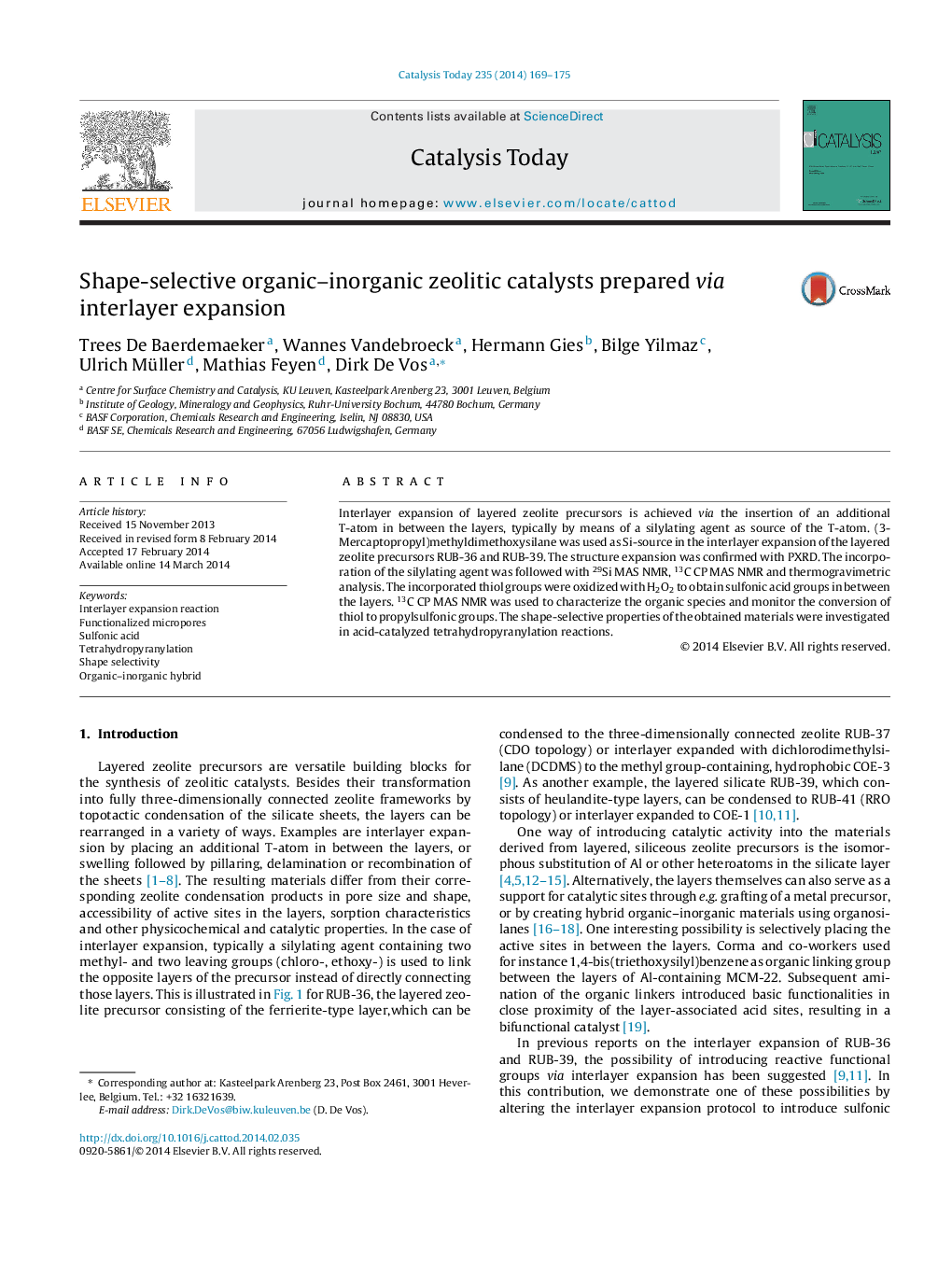| Article ID | Journal | Published Year | Pages | File Type |
|---|---|---|---|---|
| 54689 | Catalysis Today | 2014 | 7 Pages |
•Layered zeolite precursors RUB-36 and RUB-39 were interlayer expanded.•Sulfonic acid groups were introduced in between the layers.•The catalysts showed shape-selective properties in tetrahydropyranylation reactions.
Interlayer expansion of layered zeolite precursors is achieved via the insertion of an additional T-atom in between the layers, typically by means of a silylating agent as source of the T-atom. (3-Mercaptopropyl)methyldimethoxysilane was used as Si-source in the interlayer expansion of the layered zeolite precursors RUB-36 and RUB-39. The structure expansion was confirmed with PXRD. The incorporation of the silylating agent was followed with 29Si MAS NMR, 13C CP MAS NMR and thermogravimetric analysis. The incorporated thiol groups were oxidized with H2O2 to obtain sulfonic acid groups in between the layers. 13C CP MAS NMR was used to characterize the organic species and monitor the conversion of thiol to propylsulfonic groups. The shape-selective properties of the obtained materials were investigated in acid-catalyzed tetrahydropyranylation reactions.
Graphical abstractFigure optionsDownload full-size imageDownload high-quality image (124 K)Download as PowerPoint slide
